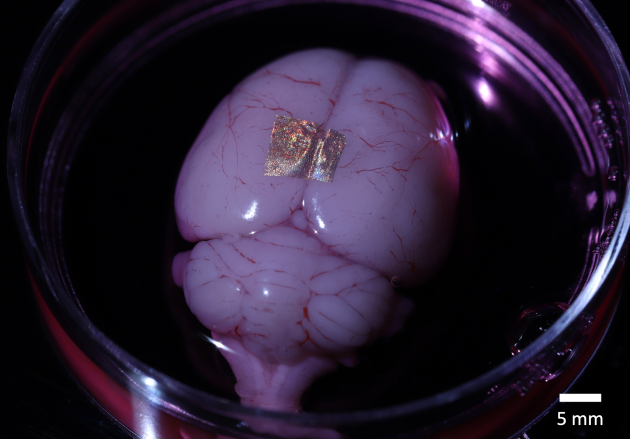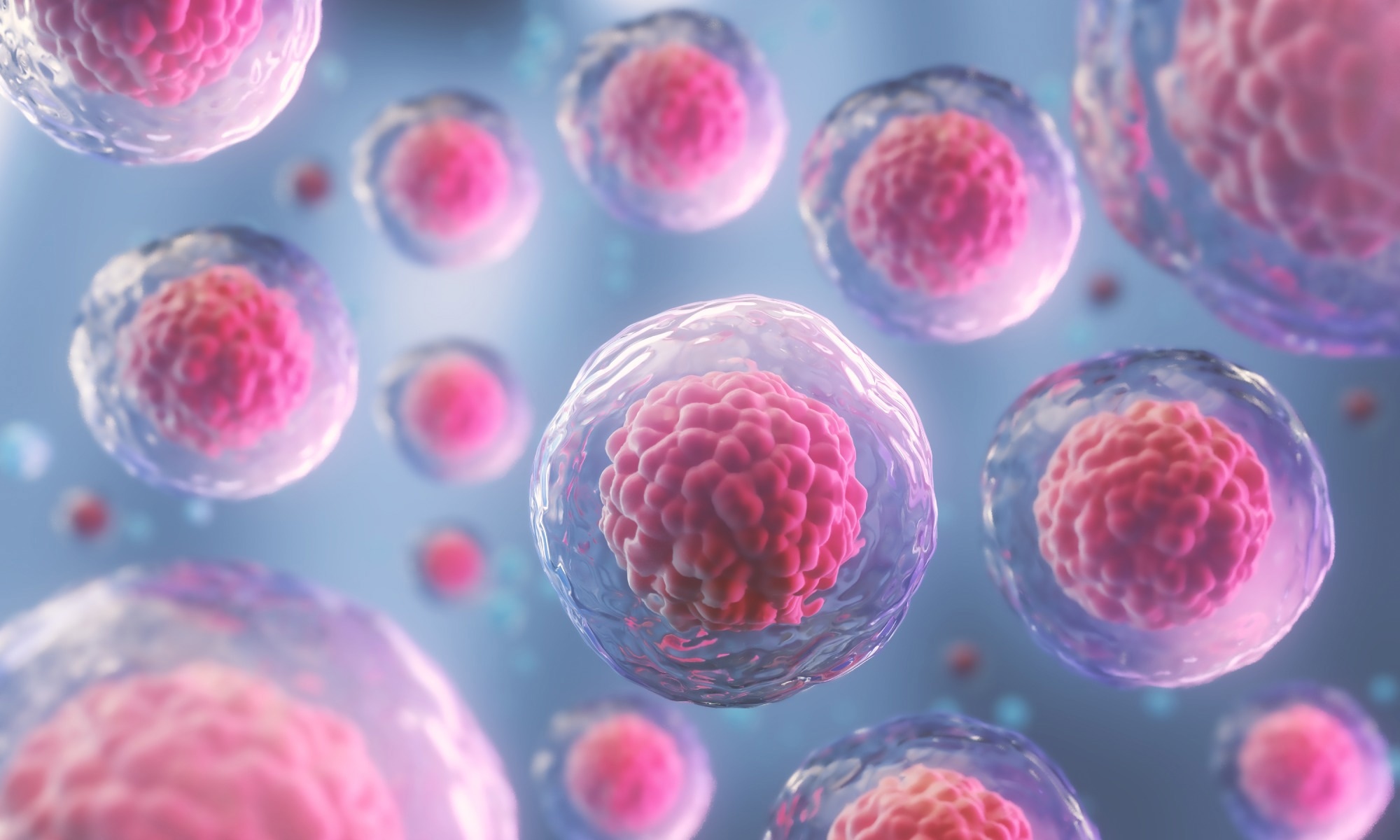Reviewed by Danielle Ellis, B.Sc.Aug 8 2023
Engineers have created nanoscale tattoos, which are dots and wires that adhere to living cells, bringing investigators one step closer to monitoring the health of individual cells.
 Gold nanowire array on a rat brain. Image Credit: Kam Sang Kwok and Soo Jin Choi, Gracias Lab/Johns Hopkins University
Gold nanowire array on a rat brain. Image Credit: Kam Sang Kwok and Soo Jin Choi, Gracias Lab/Johns Hopkins University
The new technology enables the placement of optical elements or electronics on live cells for the first time, using tattoo-like arrays that stick to cells while flexing and conforming to the cells’ wet and fluid outer structure.
If you imagine where this is all going in the future, we would like to have sensors to remotely monitor and control the state of individual cells and the environment surrounding those cells in real time. If we had technologies to track the health of isolated cells, we could maybe diagnose and treat diseases much earlier and not wait until the entire organ is damaged.”
David Gracias, Professor, Chemical and Biomolecular Engineering, Johns Hopkins University
The research was published in Nano Letters.
The tattoos, according to Gracias, who develops non-invasive, non-toxic biosensor technologies, act as a link between living cells or tissue and traditional sensors and electronic materials. He claimed that they function similarly to barcodes or QR codes.
We're talking about putting something like an electronic tattoo on a living object tens of times smaller than the head of a pin. It's the first step toward attaching sensors and electronics on live cells.”
David Gracias, Professor, Chemical and Biomolecular Engineering, Johns Hopkins University
The structures remained attached to soft cells for 16 hours, even when the cells moved.
The tattoos were created as arrays by the researchers using gold, a material known for its ability to avoid signal loss or distortion in electronic wiring. They attached the arrays to fibroblasts, which are cells that make and maintain tissue in the human body.

Image Credit: Anusorn Nakdee/Shutterstock.com
The arrays were then treated with molecular glues before being transferred to the cells with an alginate hydrogel film, a gel-like laminate that can be dissolved once the gold is adhered to the cell. The molecular glue on the array adheres to the extracellular matrix, a film secreted by cells.
Earlier research has shown that hydrogels can be used to adhere nanotechnology to human skin and internal animal organs. Gracias’ group is discussing the long-standing challenge of making optical sensors and electronics compatible with biological matter at the single cell level by demonstrating how to adhere nanowires and nanodots to single cells.
We've shown we can attach complex nanopatterns to living cells, while ensuring that the cell doesn't die. It's a very important result that the cells can live and move with the tattoos because there's often a significant incompatibility between living cells and the methods engineers use to fabricate electronics.”
David Gracias, Professor, Chemical and Biomolecular Engineering, Johns Hopkins University
Another essential skill is the team’s capacity to connect the wires and dots in an array. Researchers must be able to arrange sensors and wiring into precise patterns, similar to how they are arranged in electronic chips, in order to use this technology to track bioinformation.
David Gracias adds, “This is an array with specific spacing, not a haphazard bunch of dots.”
The team intends to attach more complex nanocircuits that can remain in place for longer periods of time. Researchers also want to experiment with various cell types.
Source:
Journal reference:
Kwok, K. S., et al. (2023) Toward Single Cell Tattoos: Biotransfer Printing of Lithographic Gold Nanopatterns on Live Cells. Nano Letters. doi.org/10.1021/acs.nanolett.3c01960.